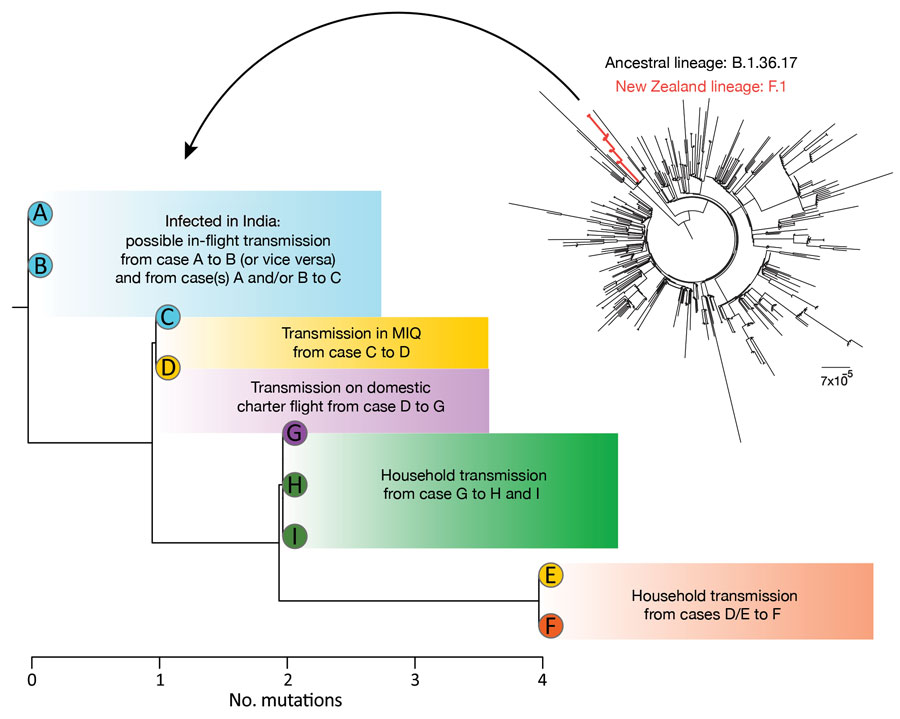Volume 27, Number 5—May 2021
Synopsis
Transmission of Severe Acute Respiratory Syndrome Coronavirus 2 during Border Quarantine and Air Travel, New Zealand (Aotearoa)
Figure 2

Figure 2. Phylogenetic trees showing genomic relationship of severe acute respiratory syndrome coronavirus 2 genomes generated for 9 case-patients, New Zealand, September 2020. Shown are number of mutations, as well as the F.1 cluster (red) within the context of the closest ancestral B.1.36.17 lineage (black). Scale bar indicates nucleotide substitutions per site. MIQ, managed isolation and quarantine.
Page created: March 16, 2021
Page updated: April 20, 2021
Page reviewed: April 20, 2021
The conclusions, findings, and opinions expressed by authors contributing to this journal do not necessarily reflect the official position of the U.S. Department of Health and Human Services, the Public Health Service, the Centers for Disease Control and Prevention, or the authors' affiliated institutions. Use of trade names is for identification only and does not imply endorsement by any of the groups named above.